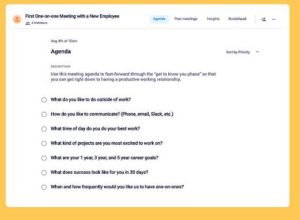What Are the Tips for Scheduling Meetings Effectively?
Choose the Right Timing The first step toward effective meeting scheduling is to find a time that works for the majority of attendees. Research suggests that mid-morning, specifically between 10 AM and 11 AM, is generally the best time to schedule meetings, as most people are at their peak mental alertness during this period. Doodle's 2019 State of Meetings Report highlighted that Tuesday is the most preferred day for meetings, given its distance from the productivity slump typically associated with Mondays and Fridays.

Utilize Smart Scheduling Tools Embracing technology can simplify the scheduling process significantly. Tools like Doodle, Microsoft Outlook, and Google Calendar offer features that allow you to view multiple participants' availability simultaneously. A significant benefit here is reducing the back-and-forth often involved in meeting planning. According to a survey by the software company Atlassian, employees spend on average 31 hours every month in unproductive meetings, partially due to poor scheduling.
Set a Clear Agenda Ahead of Time Sending out a clear and concise agenda before the meeting can save time and ensure that participants are well-prepared. This should include key points of discussion, expected outcomes, and any preparation required from the attendees. Statistics from a Harvard Business Review suggest that meetings with pre-circulated agendas are up to 33% shorter than those without, as agendas help keep discussions focused and on-topic.
Limit Attendee Numbers Not everyone needs to be in every meeting. Jeff Bezos's 'two-pizza rule'—if two pizzas can't feed the entire group, it's too large—encourages keeping meetings small and manageable. Smaller groups tend to make decisions faster and more efficiently. A study by the University of North Carolina found that decision effectiveness decreases by 10% for every additional person in a meeting beyond seven participants.
Respect Time Zones For companies with a global footprint, considering the time zones of all participants is crucial. Tools like World Time Buddy can help you plan across different regions. Ensuring that meeting times are reasonable for all involved can increase participation and attentiveness.
Review and Adjust as Needed Effective scheduling isn't just about setting a meeting; it's also about refining the process. Solicit feedback from participants about what times and formats work best for them. Continuously improving your scheduling tactics can lead to more productive meetings and less time wasted.
Finally, understanding how to schedule meetings effectively is key to enhancing productivity and ensuring that meetings are valuable and engaging. For a more comprehensive guide on scheduling meetings that everyone can attend, check out this detailed resource: how to schedule meetings effectively.
Applying these tips can transform your meeting culture from a dreaded obligation to an efficient, productive element of your daily workflow.